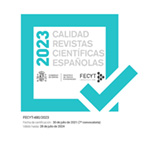La construcción conceptual en los procesos de delimitación y de fronterización: la región platina de Sudamérica (siglos XIX y XX)
Resumen
El artículo toma como objeto la región platina, formada a partir de la cuenca del río de la Plata, involucrando a cinco Estados nacionales sudamericanos: la Argentina, el Brasil, Bolivia, el Paraguay y el Uruguay. Se propone reconstruir a grandes trazos el proceso de delimitación acontecido en esta región. Asimismo, busca identificar y sistematizar las principales iniciativas que llevaron a la formación de dispositivos fronterizos unilaterales y bilaterales. Se trabajó principalmente con legislación generada en esos países (leyes, constituciones) y entre ellos (acuerdos, protocolos). Se trabajará con dos nociones: delimitación y fronterización. Se logra reconstruir buena parte del sistema fronterizo regional, que permitió diferenciar los territorios, a la vez que acercarlos y mantener ciertos equilibrios de poder, a pesar de las asimetrías y las rivalidades existentes a lo largo de los siglos XIX y XX.Descargas
Descarga artículo
Licencia
La revista Geopolítica(s). Revista de estudios sobre espacio y poder, para fomentar el intercambio global del conocimiento, facilita el acceso sin restricciones a sus contenidos desde el momento de su publicación en la presente edición electrónica, y por eso es una revista de acceso abierto. Los originales publicados en esta revista son propiedad de la Universidad Complutense de Madrid y es obligatorio citar su procedencia en cualquier reproducción total o parcial. Todos los contenidos se distribuyen bajo una licencia de uso y distribución Creative Commons Reconocimiento 4.0 (CC BY 4.0). Esta circunstancia ha de hacerse constar expresamente de esta forma cuando sea necesario. Puede consultar la versión informativa y el texto legal de la licencia.









